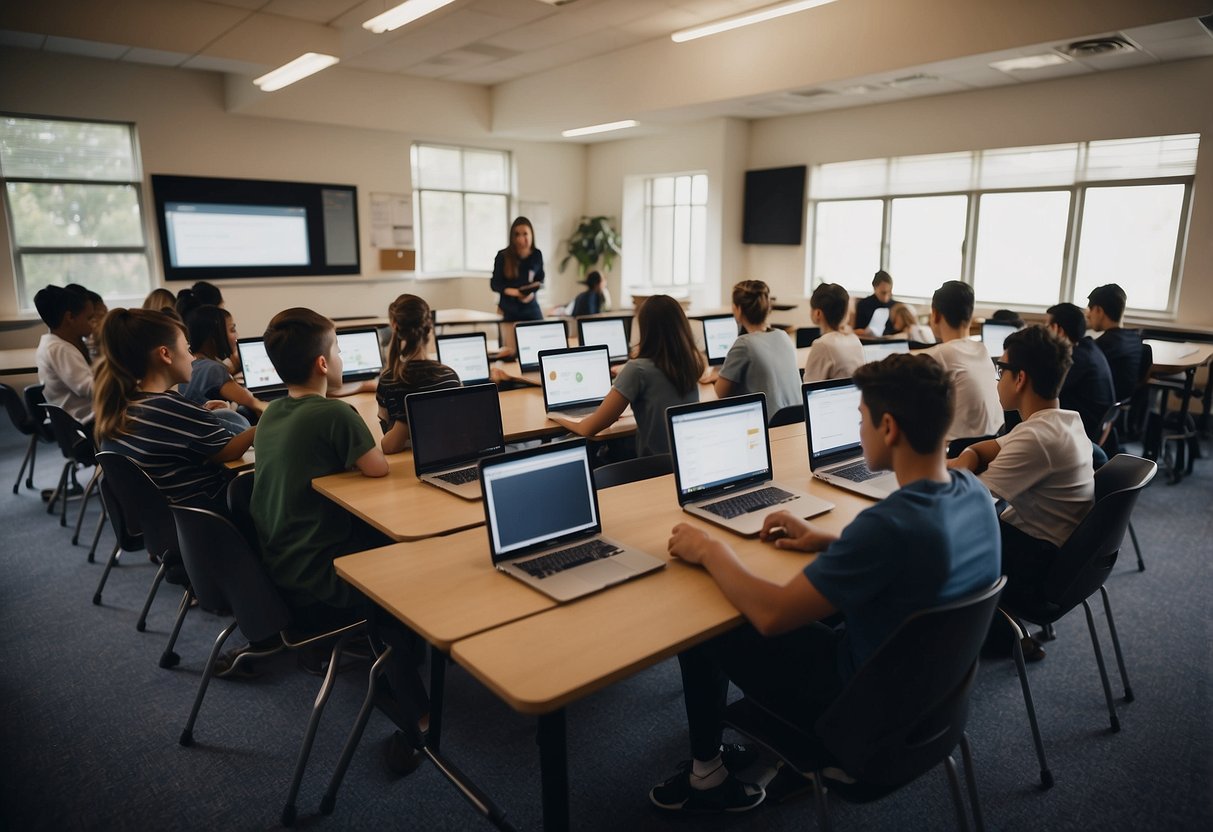
Tackling Modern Challenges with Education Technology
In the digital age, addressing issues such as cybersecurity and environmental education has become paramount. Each presents unique obstacles and opportunities in enhancing the learning experience.
Cybersecurity in the Digital Classroom
Cyberattacks are a growing concern in modern education. With increased dependency on digital platforms, schools and universities find themselves more vulnerable to breaches. Implementing robust cybersecurity measures is critical to protect sensitive information from unauthorized access.
Privacy concerns are another significant challenge. Students’ data must be safeguarded to prevent misuse and ensure a safe learning environment. Schools must adopt comprehensive policies and use advanced encryption technologies to keep information secure.
Proper communication between IT departments, educators, and students helps in building awareness and implementing best practices for online safety. Training sessions and workshops can educate all stakeholders about potential threats and how to mitigate them effectively.
Education’s Role in Climate Change Awareness
Education has a pivotal role in raising awareness about climate change. Integrating climate science into school curriculums ensures that students understand the impact of human activities on the environment. This knowledge equips them to make informed decisions for a sustainable future.
Interactive digital tools can enhance this learning experience. Virtual simulations of environmental scenarios allow students to visualize the consequences of different actions. Such tools make complex topics more accessible and engaging.
Incorporating discussions on sustainability and responsible living helps students develop a mindset geared towards environmental stewardship. Collaborations with environmental organizations can provide real-world insights and involvement in community projects, reinforcing the importance of climate change awareness.
The Role of Technology in Special Education
The integration of technology into special education has profoundly impacted learning by providing tailored tools for multilingual and disabled students while addressing biases and promoting equity.
Tools for Multilingual and Disabled Students
Technology has introduced several innovative tools that support multilingual learners and students with disabilities. For instance, speech-to-text software aids those with dyslexia or other reading challenges by converting spoken words into written text. Similarly, text-to-speech applications help visually impaired students by reading out digital text.
Multilingual learners benefit from translation apps and educational software that offer content in multiple languages, fostering inclusive learning environments. Moreover, adaptive learning platforms personalize the learning experience based on individual needs, enhancing engagement and understanding. These tools ensure that all students can access and engage with educational content effectively, regardless of their linguistic or physical limitations.
Bias and Equity in Education Technology
While technology offers numerous advantages, it also introduces biases that can affect educational equity. Algorithms in educational software can sometimes reflect unintended biases, resulting in unequal learning outcomes. For example, speech recognition technology may struggle with diverse accents, disadvantaging students from various linguistic backgrounds.
Efforts are being made to mitigate these biases through diverse data sets and inclusive design practices. Ensuring equity involves continuous monitoring and updating of technologies to accommodate every student’s unique needs. By addressing these biases, technology can become a powerful ally in creating a fairer, more inclusive educational landscape for all students, including those with disabilities and multilingual backgrounds.